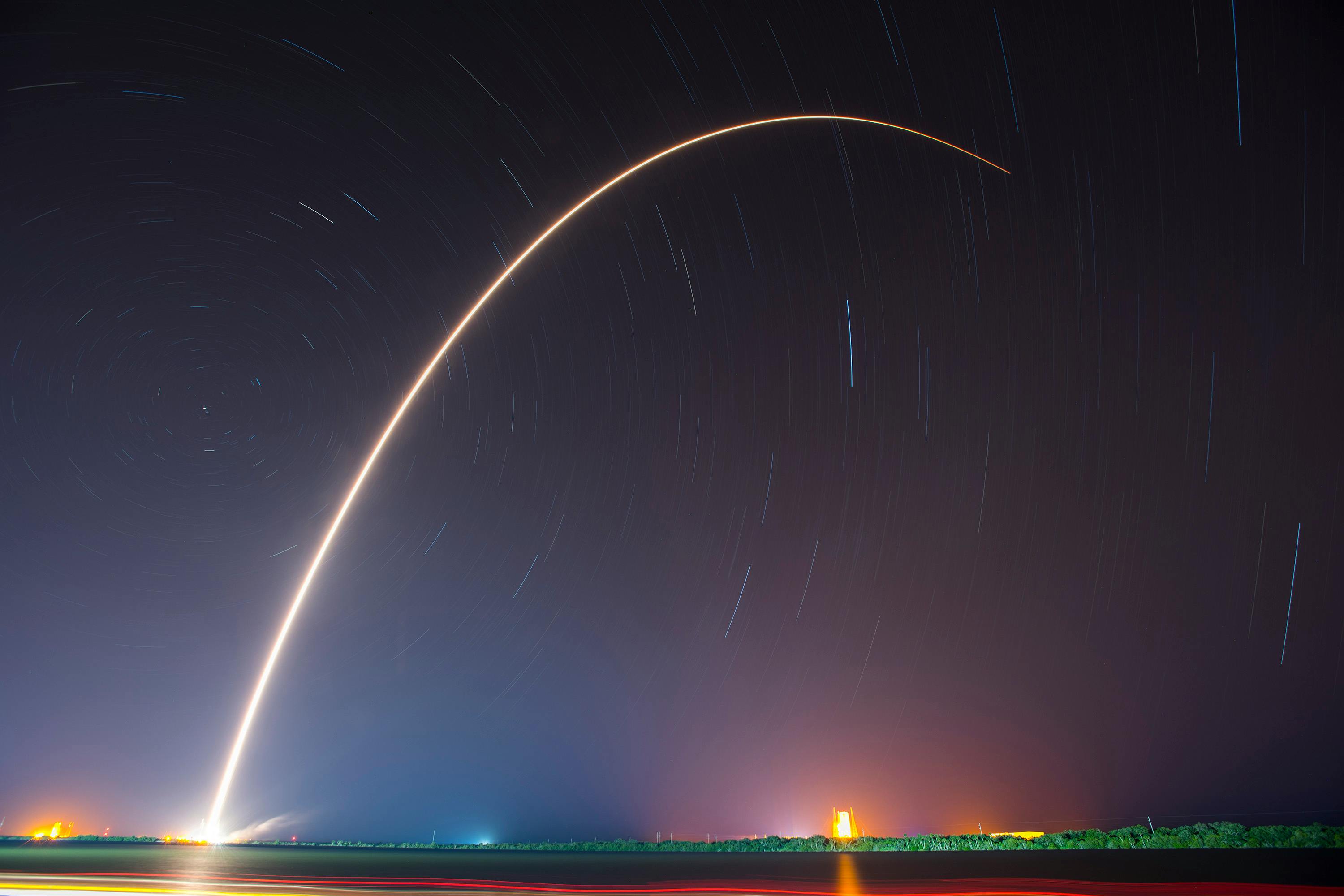· space brief · 6 min read
Space Brief 28 May 2025
Today's briefing covers SpaceX's ambitious launch and temporary setback with their Super Heavy booster, adjustments in South African telecommunications laws influenced by Starlink, and the U.S. Navy's strategic shifts amidst changes in unmanned combatant acquisitions.

📄Top Stories
SpaceX’s innovative launch involving a reused Super Heavy booster faced a setback as the Starship was lost mid-flight due to technical issues. Meanwhile, South Africa considers adjustments to its black ownership telecom laws, responding to pressure from Starlink. In the military sector, the U.S. Navy undergoes strategic personnel changes in its unmanned and small combatant acquisitions.
📰Detailed Coverage
SpaceX Launches and Loses Control of Starship
SpaceX successfully launched their first reused Super Heavy booster, showcasing the Block 2 version of the upper stage. However, the mission ended prematurely as the rocket lost attitude control mid-flight due to leak-related issues. This counts as a significant technical step forward since the new version managed to advance further than previous attempts, underlining both achievements and challenges in reusable technology.
For satellite trackers, this underlines the complexity of monitoring high-stakes launches and the real-time data our web app provides can keep you updated on such dynamic situations. Read the full story: SpaceFlight Now
South Africa Rethinks Telecom Laws Under Starlink Influence
South Africa is poised to ease its black empowerment laws within the telecom industry, a move that could open doors for Elon Musk’s Starlink. This development comes on the heels of discussions between South African and U.S. leadership, highlighting international and economic considerations behind satellite internet deployment.
The adjustment signifies a strategic shift to integrate global satellite communications technology, reflecting growing pressures and opportunities in the sector. Read the full story: Africa Daily
U.S. Navy Changes in Unmanned Combatant Leadership
Rear Adm. Kevin Smith has been relieved from his duties over the unmanned, small combatant acquisition operations due to issues substantiated through an Inspector General complaint. This decision marks an impactful change in leadership within the U.S. Navy, reflecting broader strategic shifts in its acquisition strategies.
This personnel shift emphasizes the importance of streamlined and accountable management in defense procurement, critical to maintaining technological and tactical advantages. Read the full story: Breaking Defense
The Golden Dome and Defense Reforms
The golden dome initiative represents a significant step in defense acquisition reforms. Emphasizing an integrated “system of systems” approach, this strategy aims to transform acquisition processes, making them more flexible and efficient in responding to modern threats.
This reform resonates with needs to maintain agility in defense technologies, ensuring new capabilities are delivered timely to meet emergent requirements. Read the full story: SpaceNews
Army Accelerates FLRAA Helicopter Program
The U.S. Army is adopting a more rapid approach towards finalizing its Future Long-Range Assault Aircraft (FLRAA) program. This acceleration aims to balance diligence with speed, ensuring a safe and effective end product without compromising on the thoroughness of the evaluation process.
This development illustrates the importance of innovation timelines in military procurement, which can affect defense readiness and strategic capabilities. Read the full story: Breaking Defense
🛰️Satellite Spotlight
- Satellite Name: NAVSTAR 33 (USA 92)
- NORAD ID: 22700
- Launch Date: June 26, 1993
- Mission: NAVSTAR 33 is part of the Global Positioning System (GPS) constellation, providing essential navigation capabilities for military and civilian applications worldwide.
- Orbit: Medium Earth Orbit (MEO)
- Operator: U.S. Air Force Space and Missile Systems Center (AFSMC)
- Fun Fact: NAVSTAR 33, also known as GPS IIA-12, was one of the early satellites in the GPS series, which has since revolutionized navigation, significantly impacting global positioning services used in everything from smartphones to military operations.
Track this satellite in real-time on our web app: Track NAVSTAR 33 (USA 92)
🌌Space Weather
Current space weather shows Enhanced solar wind (576 km/s).
R0 - S0 - G0
Next 24 Hours: In the coming day, satellite owners and operators can rest easy as there’s no risk of radio blackouts or solar radiation storms. However, moderate geomagnetic activity is expected, with minor geomagnetic storms likely due to Coronal Hole High-Speed Stream (CH HSS) effects. This could lead to G1 (Minor) geomagnetic storms, primarily during the expected increase in activity on 28 May. Ground-based radars and telescopes should remain operational, but heightened geomagnetic activity could slightly affect accuracy in high-precision measurements. Satellite communication users should experience stable operational conditions; however, prepare for potential minor disruptions if the geomagnetic activity escalates. For Low Earth Orbit (LEO) satellites, light drag impacts are anticipated due to increased solar wind, but nothing beyond normal variations.
Beyond: Looking ahead from 26 May to 21 June 2025, moderate solar activity levels (R1-R2/Minor-Moderate) are likely as Region 4098 (making its way towards the Sun’s west limb) shows promising stability for increased solar outputs. There remains a chance for M-class X-ray activity and occasional R3 (Strong) events. While no proton events are forecast for geosynchronous orbit, operators should be aware of the high levels of the greater than 2 MeV electron flux expected from 30 May to 05 June and 14-21 June, influenced by recurrent coronal holes. Geomagnetic conditions may be mostly elevated, indicating potential impacts on satellite operations and ground-based instrumentation. G1 storms are anticipated on 13-14 June, with active conditions on several dates, while quiet periods will only occur on 08-09 June. It’s advisable for operators to monitor conditions closely to mitigate any adverse effects on satellite performance.
Upcoming Space Launches
May 27
- SpaceX Starship:
- Flight 9 from SpaceX Starbase, TX, USA (23:30 UTC) This is the 9th test flight of the two-stage Starship launch vehicle.
May 28
-
SpaceX Falcon 9 Block 5:
- Starlink Group 10-32 from Kennedy Space Center, FL, USA (13:30 UTC) A batch of 27 satellites for the Starlink mega-constellation, a project for space-based Internet communication.
-
China Aerospace Science and Technology Corporation Long March 3B/E:
- Tianwen-2 from Xichang Satellite Launch Center, People’s Republic of China (17:22 UTC) This mission will visit Near Earth asteroid 469219 Kamoʻoalewa to collect samples and later visit the main-belt comet 311P/PANSTARRS.
May 29
-
Rocket Lab Electron:
- Full Stream Ahead (BlackSky Gen-3 2) from Rocket Lab Launch Complex 1, Mahia Peninsula, New Zealand (01:15 UTC) The second BlackSky Gen-3 high resolution Earth-imaging satellite.
-
China Aerospace Science and Technology Corporation Long March 2D:
- Unknown Payload from Jiuquan Satellite Launch Center, People’s Republic of China (04:03 UTC) Details TBD.
May 30
-
SpaceX Falcon 9 Block 5:
- GPS III SV08 from Cape Canaveral SFS, FL, USA (17:23 UTC) The eighth of ten GPS III missions.
-
SpaceX Falcon 9 Block 5:
- Starlink Group 11-18 from Vandenberg SFB, CA, USA (20:24 UTC) A batch of satellites for the Starlink mega-constellation.
May 31
- Blue Origin New Shepard:
- NS-32 from Corn Ranch, Van Horn, TX, USA (13:30 UTC) This mission marks the 12th crewed flight for the New Shepard program.
June 2
- SpaceX Falcon 9 Block 5:
- Starlink Group 12-19 from Cape Canaveral SFS, FL, USA (04:57 UTC) A batch of satellites for the Starlink mega-constellation.
Note: Launch dates and times are subject to change due to technical or weather considerations.

Maurice Stellarski





